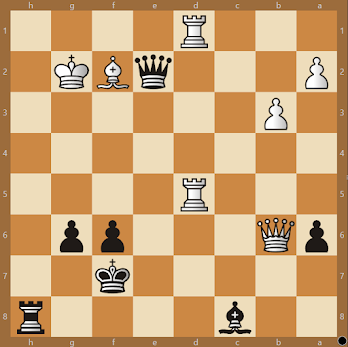Getting persnickety
How do chess prodigies get their teachings when super grandmasters are not able to coach them? I stumbled upon this serendipity and made this half serious and half with tongue in cheek statement. But the ensuing comments showed that I might try to develop a hypothesis from this. Basic tactics. Tactics with a name (black and white) Advanced tactics. Tactics with no name (50 shades of grey) Basic positional play. Manoeuvres with a name (black and white) Advanced manoeuvres. Manoeuvres with no name (50 shades of grey) Basic knowledge. Knowledge with a name (black and white) Advanced knowledge. Knowledge with no name (50 shades of grey) The first four points, I reckon to be skill. The last two are knowledge, evidently. I master points 1, 3 and 5 to a certain degree. And I assume that that applies to most adult plateauing club players. I have some black and white skills, and some black and white knowledge. I reckon that from candidate masters and hi...



